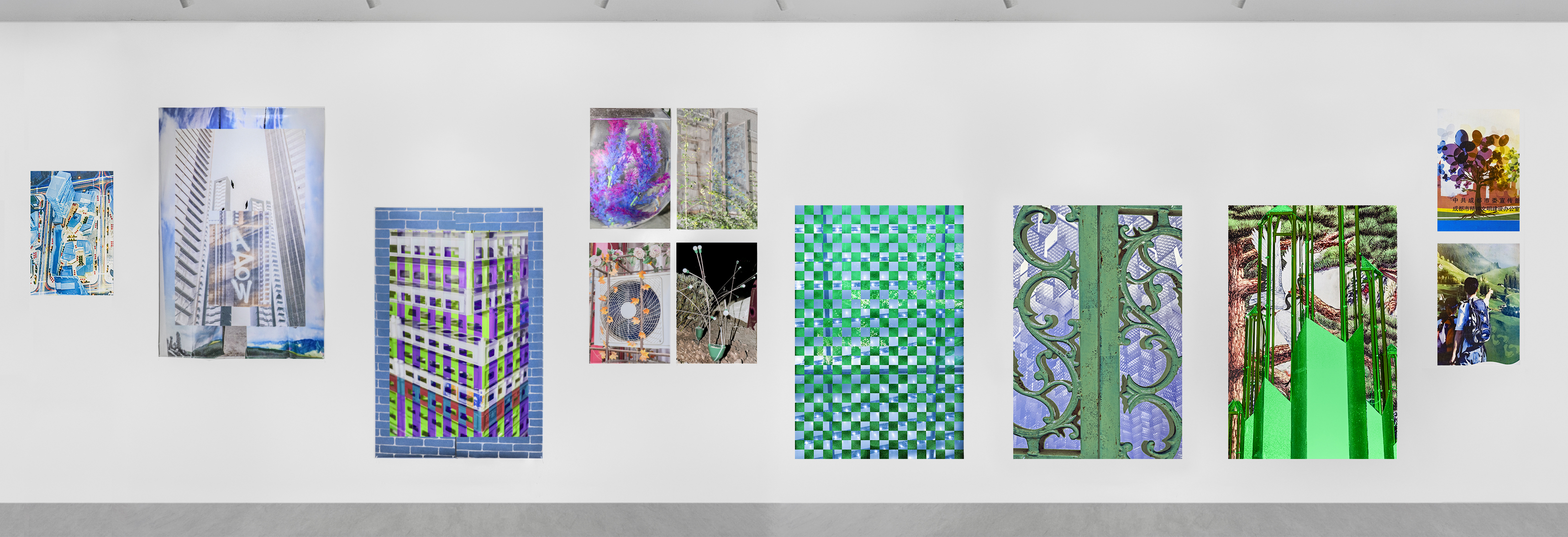Syncopation 错拍
Photography / Installation / Publication
2020-2021
“Time folds, and it doesn’t fold neatly... A keen awareness of contemporaneity cannot but dissolve the illusion that some things, people, places, and practices are more 'now' than others.”
— Raqs Media Collective, Now and Elsewhere
— Raqs Media Collective, Now and Elsewhere
“时间折叠,而且它并不整齐地折叠……对当代性的敏锐意识,必然会打破这样一种幻觉:以为某些人、事、地更‘当下’。”
— Raqs Media Collective,《此时与他方》
— Raqs Media Collective,《此时与他方》


Growing up between rural China and urban centers made the urban–rural divide visceral for me. With a Sony camera, I began documenting Chengdu’s transitional zones—borderlands where city and countryside meet, generating syncopated rhythms of development. These in-between spaces resist and absorb urbanization through the cracks of civilization.
My photographic language foregrounds fragmentation, flash, and visual compression. The project is presented through a diptych format: two publications—Now and Elsewhere—and a photographic installation. This split form reflects the temporal dissonance I encounter:
- Now focuses on fading textures of traditional life—wrought iron, checkered fabrics, weeds bursting through ruins, and fragile spiderwebs—artifacts of presence under threat.
-
Elsewhere captures glowing neon, LED signage, and speculative architecture—images of a parallel present unfolding at the same coordinates.
Like musical syncopation that offsets the expected beat, these photographs mark the irregular tempo of survival. The dual structure is not a binary but a dissonant chord—two timelines entangled but unsynchronized. What appears marginal becomes central to understanding how contemporary China breathes through multiple temporalities. Will these spaces be erased, co-opted, or allowed to pulse on their own off-beat?
在城乡之间成长让我切身感受到城市与乡村的断裂。我用一台索尼相机开始记录成都的过渡地带——城乡交界处生成出一种错拍的节奏,这些边界空间透过文明的缝隙,一边抵抗、一边吸收城市化的进程。
我的摄影语言强调碎片、闪光与视觉压缩。项目以双册出版和展览装置构成:《此时》与《他方》,两个视角彼此对照,却非对立。
- 《此时》捕捉正在消逝的传统生活细节——锈蚀的铁艺、褪色的格子布、穿墙而出的野草、以及脆弱的蛛网——这些微小的存在既属于现在,也濒临缺席。
-
《他方》呈现的是闪烁的霓虹、LED屏幕与投射未来的建筑——它们代表另一种现实,在同一坐标上同时生长。
如同音乐中打破常规节拍的错拍音,这些影像揭示了非整齐的生存节奏。这种双重结构不是二元对立,而是一种不同步的和声——两个交错的时间层互为伴奏。那些看似边缘的地带,反而构成了理解中国当代节奏的关键。
这些空间将被同化、被清除,还是被允许以自身的错拍继续呼吸?这个问题仍在继续。
back 返回